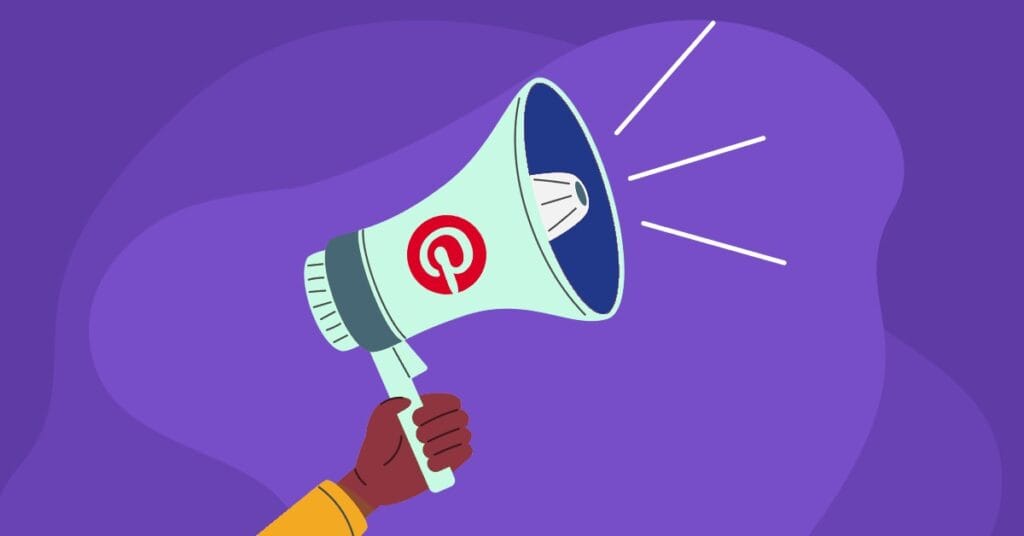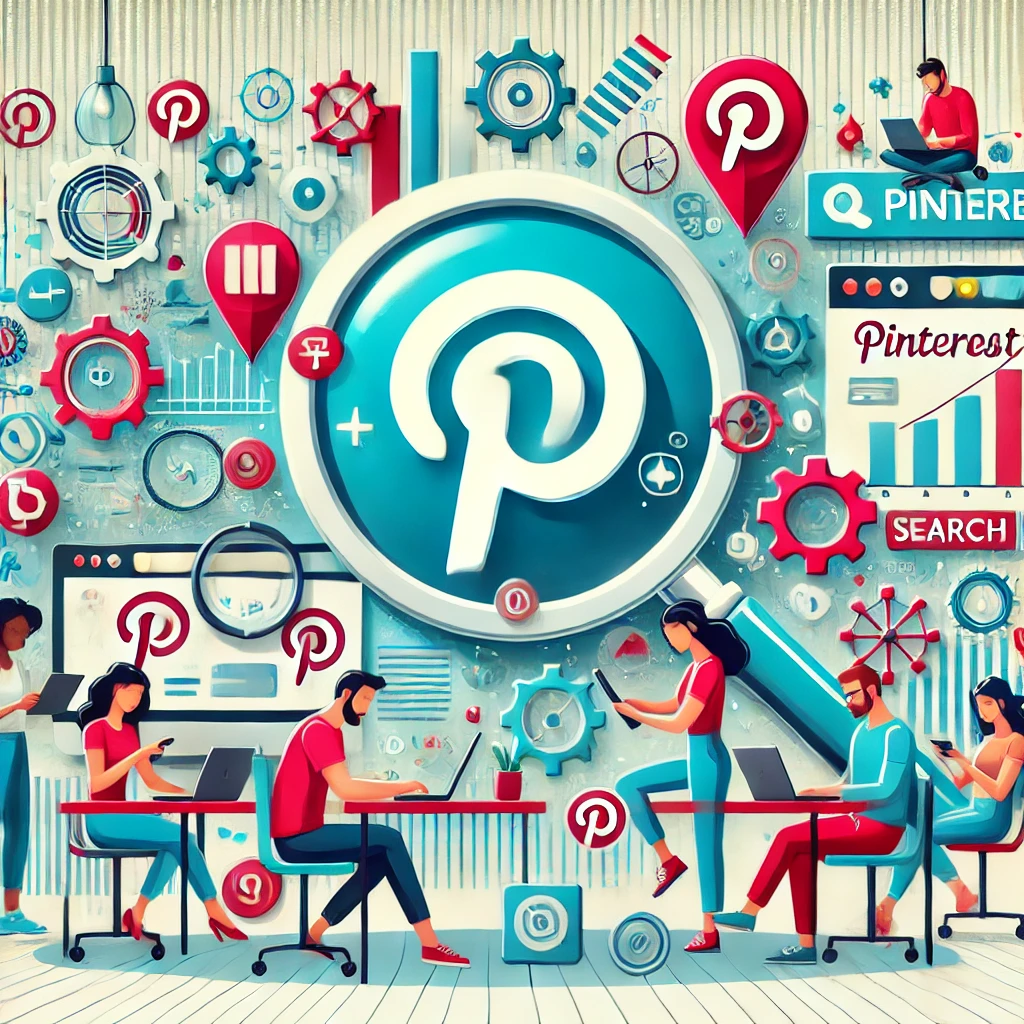While most people think of Pinterest as a social media platform, which it certainly is, there’s an often overlooked part of the site that has crucial implications for marketers — its role as a search engine.
In many ways, Pinterest is more search than social. As a result, traditional SEO approaches can work effectively for businesses looking to add Pinterest to their channel lineup. There’s plenty of opportunity on the platform for companies in varying industries to use Pinterest to their advantage: expanding their brand presence, getting in front of new audiences, and increasing sales.
Is Pinterest Really a Search Engine?

The short answer? Yes.
As a searchable platform, Pinterest has as much SEO potential as a traditional search engine like Google. Nearly 500 million people use Pinterest each month, with 46% of weekly users discovering a new brand or product on the site. Just like people do with Google every day.
How Pinterest is Influencing Search
There have long been noticeable differences between Pinterest search results, which are primarily image and video-focused, and a traditional search engine result page (SERP). However, over the last few years, the landscape of organic SERPs has drastically changed.
Google anything nowadays and you’ll likely have to scroll past visual-first shopping features, such as ads, maps, videos, and featured snippets before you actually see the traditional search listings. It appears that Google is increasingly invested in visual search elements—drawing inspiration from places like Pinterest for its own results display.
How Pinterest Search is Unique
While it’s becoming increasingly acknowledged that Pinterest is actually a search engine used for growth marketing strategy, it’s unique in many ways. Users come to Pinterest with specific goals in mind, looking for ideas and inspiration for different aspects of their lives.
Over 80% of “pinners” report that they use Pinterest to start a new project, such as home DIYs, weddings, or vacations. With this understanding, businesses need to tailor their content appropriately.
Most users are still at the top of the funnel, not ready to make a purchase. And with 97% of searches being unbranded, customers are still very much in the research phase of the sales funnel. Despite this, though, Pinterest drives 10 times higher branded searches off-platform as a result.
Essentially, Pinterest provides what its name suggests — it’s an online pinboard for ideas and inspiration. That’s why evergreen content performs so well here. Pins can live on for many years after they were first published, continuing to circulate around the site as they’re shared by more users.
Expected Trends on Pinterest in 2024
Content Trends for This Year
Each year, Pinterest releases its trend predictions for the upcoming year. For 2024, home and garden, beauty and style, pets, and wellness continue to be significant drivers of traffic and engagement on the platform. This is unsurprising, given how Pinterest is structured and what most people use it for.
If your business is in one of these spaces, it’s worth taking a look at the 2024 Pinterest trend report for insight into the top predictions for the next 12 months.
In fact, tools like Pinterest Trends are noticeably similar to those like Google Trends, offering businesses detailed insight into what topics are trending and where they should consider focusing their attention.
Latest Demographic Shifts
As with any marketing channel, understanding the user demographic is key to success. Pinterest has historically been used predominantly by the 50 to 64 age range. While this is still the leading group at 38%, millennials and Gen Z shouldn’t be written off entirely — between them, they make up 66% of users.
Pinterest itself has reported that millennials using the site have increased by 35% year-over-year. It’s likely, then, that this is driving increasing trends for alcohol-free drinks in the food and beverage space, along with dog-related content. Shifting priorities for millennials and Gen Z, the rise of DINKs (double income, no kids), along with empty-nester Gen Xers, have likely all contributed to these emerging trends for 2023.
Purchasing Trends: In-Platform Shopping and Augmented Reality
Much like other social media platforms, Pinterest now has the ability for users to make purchases directly within the site. Removing steps from the sales process, easily allowing customers to go from research to purchase within a few clicks, is a significant move that businesses need to be taking advantage of.
But Pinterest’s research roots should never be forgotten. Instead, brands must think about how they can improve visibility and increase engagement at the top of the funnel. “Augmented reality” (AR) has filled that need, with users being able to see products in their own spaces using virtual reality technology before making a purchase decision.
Being able to make this happen within the Pinterest app means that brands can enjoy a heightened level of personalization with their potential customers, without actually needing to know any information about them.
Creating Effective Pinterest Content
Know Your Audience
Understanding exactly who you’re targeting is crucial for any marketing channel, and Pinterest is no exception. Not only do you need to know your audience demographics, but you should have a good grasp of where they are in the buying cycle when they see your pins, and create content to match that stage of the customer journey. You should always be thinking about what value your brand offers and how you can convey that in a way your audience responds to.
Create Evergreen Content
Because pins have the ability to drive traffic and engagement for years, brands must ensure that their content is both appealing now and has evergreen potential.
Use Eye-Catching and Appropriate Imagery
As a visual platform, it goes without saying that attention-grabbing pins are going to be the most successful and help you stand out among your competition.
Always check that your pin sizing is correct for both static-image and video pins — images should be vertical, have a 2:3 aspect ratio, and match the recommended size of 1,000 x 1,500 pixels. You also want to make sure that any text overlaid on your pins is easily readable for both desktop and mobile users, by using high contrast to make your content more accessible to those using screen readers.
Create Video Content
The rise of best brand ambassador programs on TikTok over the past three years is evidence enough that video content is what the people want. And with more people under 50 using Pinterest each year, it’s time to focus on alternative types of visual pins.
Reports show that Gen Z is 16% more likely to buy from a digital video ad than other generations, so if your brand is looking to attract a younger demographic, videos are going to be your best choice. Pinterest search results are prime real estate for video pins, which draw attention away from static images and are still the minority among total pins on the site. Pinterest recommends that video pins be 6-15 seconds in length, and in a 1:1 (square) or 4:5 or 9:16 (vertical) aspect ratio.
Making Your Pin Searchable
Keyword Research
As you would with any other SEO work, start with keyword research. Use the same tools, like Google Keyword Planner, Semrush, or Ahrefs to put together a list of targeted words and phrases that you think Pinterest users will be searching for. Align your Pinterest keyword research with the SEO content you’re already creating on your site, and vice versa. Having attractive pin graphics is one thing, but you need somewhere educational, inspirational, or entertaining for users to go to once they click the link in your pin.
Image Optimization
Much like you would for your website, don’t forget about image optimization. Strategically rename your image files before uploading them to Pinterest, and use relevant alt text and descriptions when you save them. Combine this with your keyword research to make data-informed decisions on how best to optimize your visual content. You should also think carefully about what you name the boards that house each individual pin. Boards also have a description area, so group pins into similar topic clusters that you would use in on-site content for your business blog or resources section of your website. Link to the most relevant on-site content for each pin, and include links to your Pinterest within your on-site copy to benefit from reciprocal linking.
Don’t Forget About Your Profile
Profiles can show up in search results as often as individual pins and boards. Optimization of a profile can be harder as you need to be broader when writing the single description. But you can still make use of keywords here, along with including a link to your website. It’s also important to engage with other Pinterest users from your own profile. Don’t simply spend your time uploading your own pins and hoping for the best. Instead, allocate some time each week to comment on and repin other content to your own boards. An active account sends positive signals to Pinterest that you’re a frequent user, which ultimately helps boost your overall profile across the site.
Conclusion
There are limitations to Pinterest SEO, just like any algorithm-based search engine. But overall, businesses shouldn’t overlook this platform and the possibilities it opens up when trying to connect with new audiences and improve brand awareness via organic marketing. By understanding Pinterest’s unique role as a search engine and crafting the right content, companies can effectively use this platform to reach and engage with their target audiences, driving meaningful traffic and conversions.






